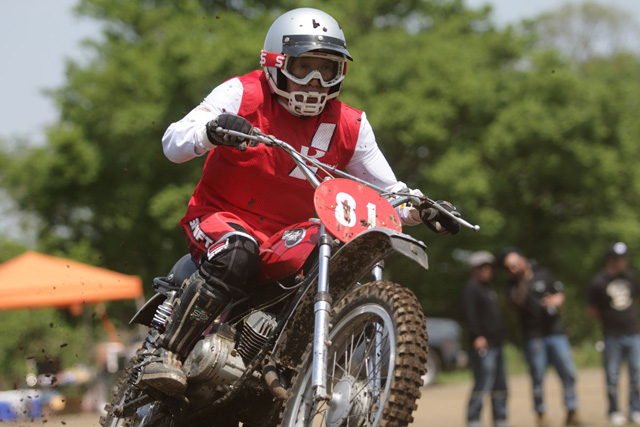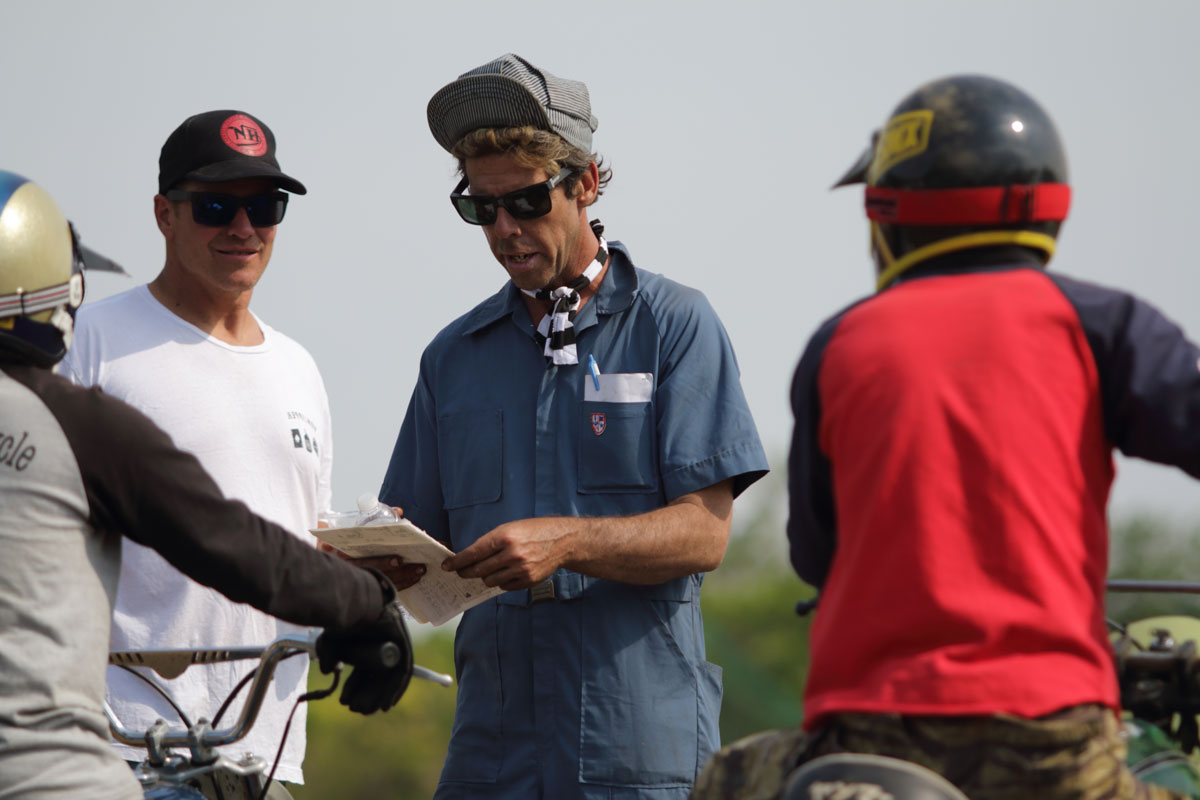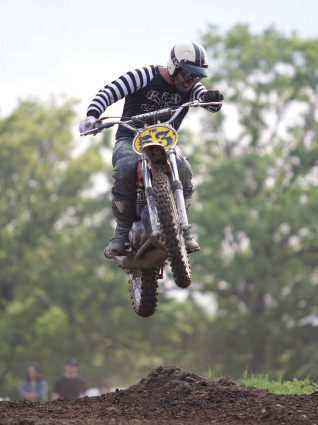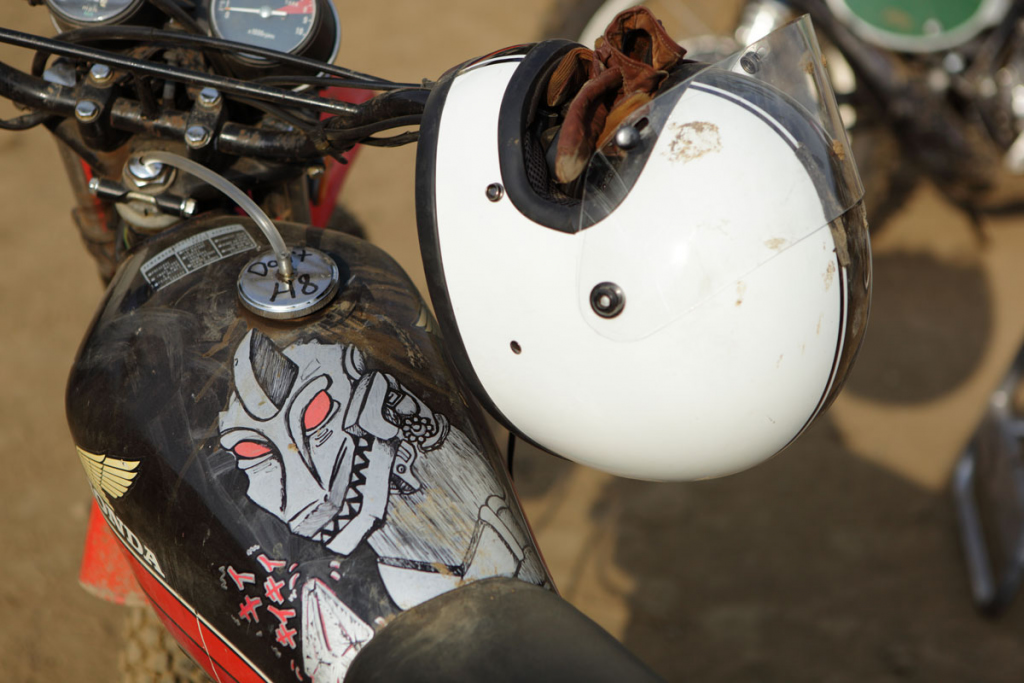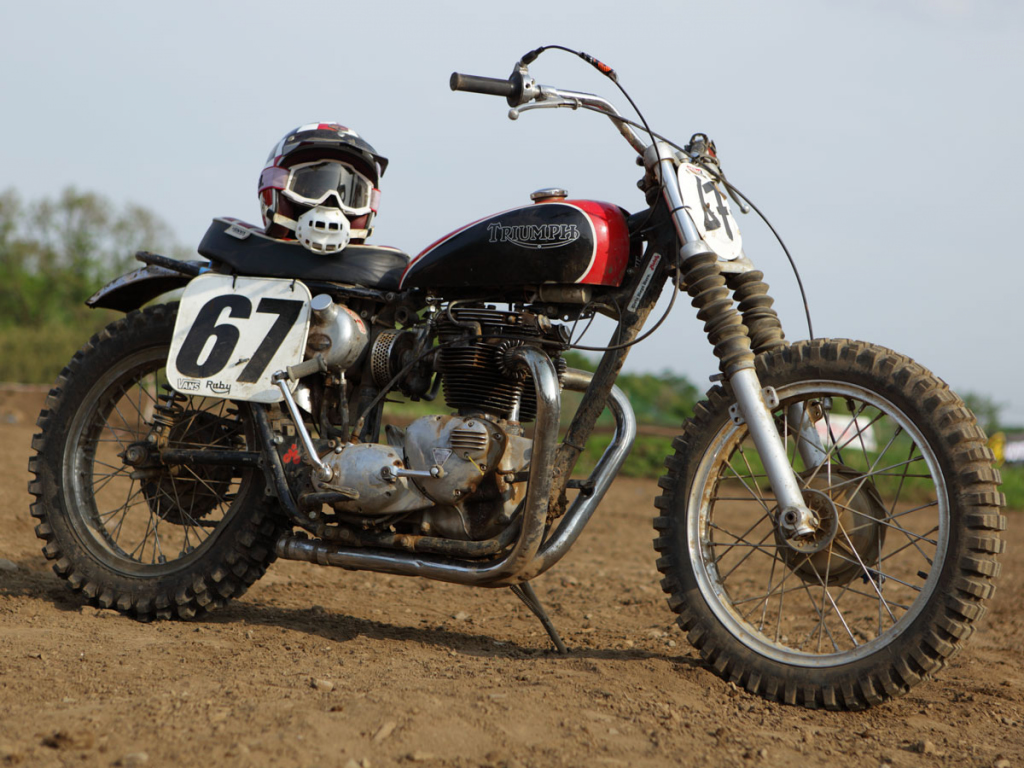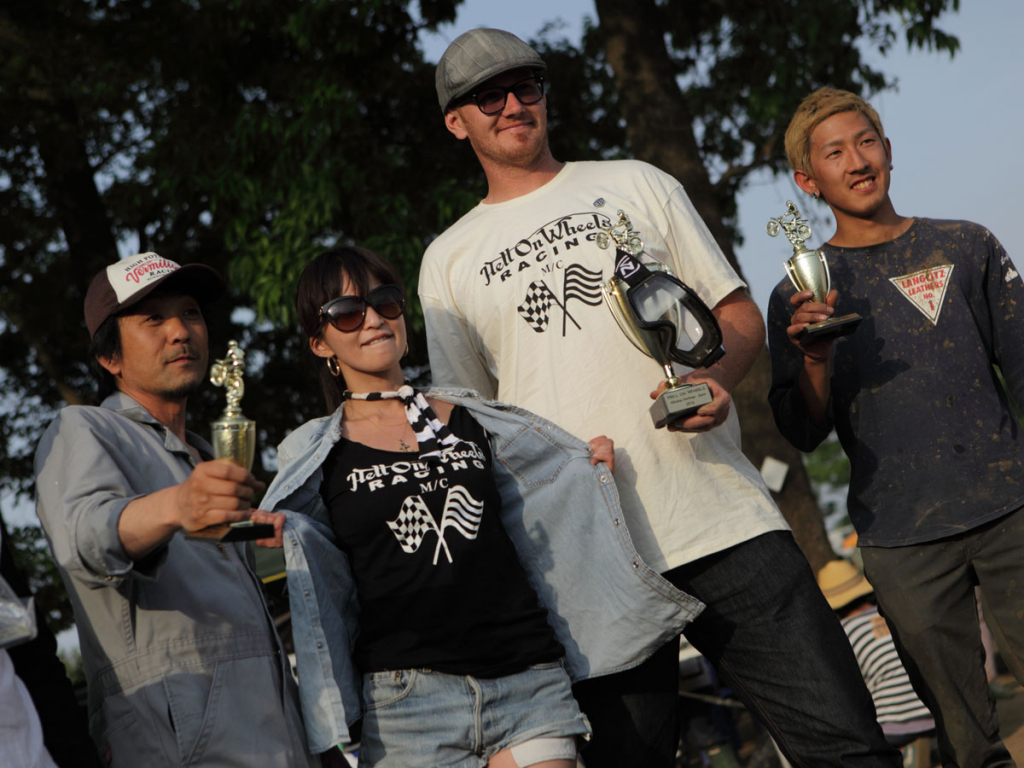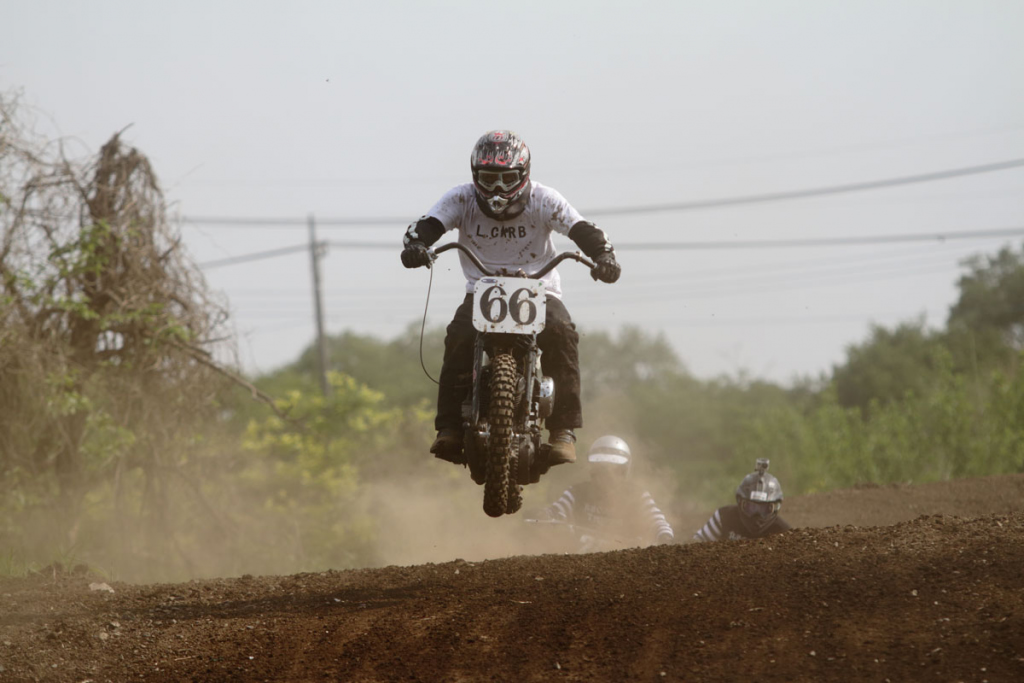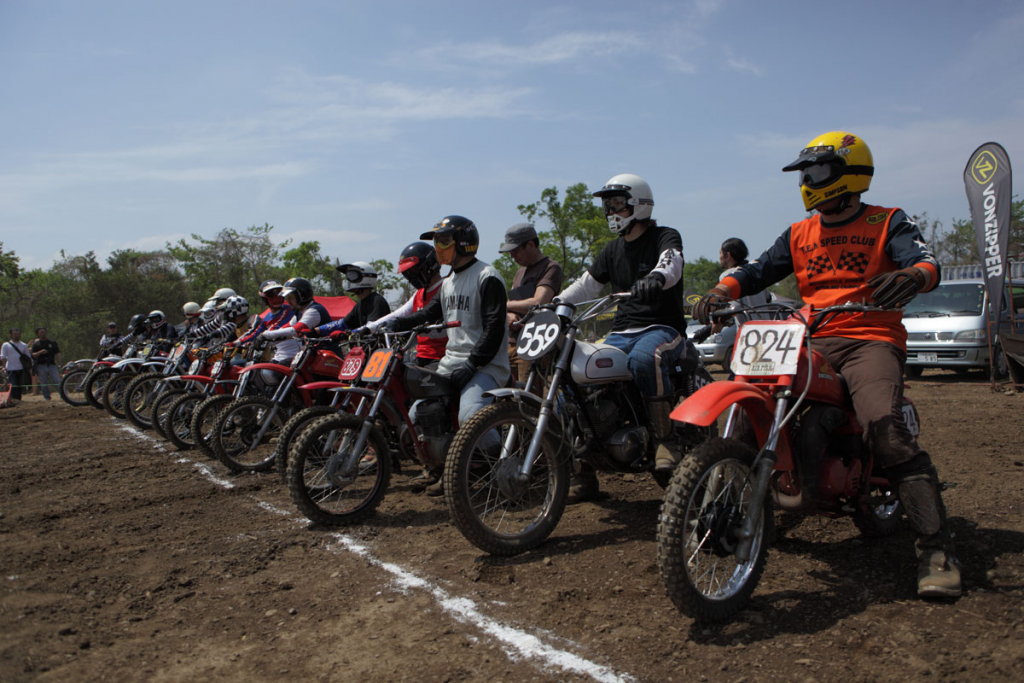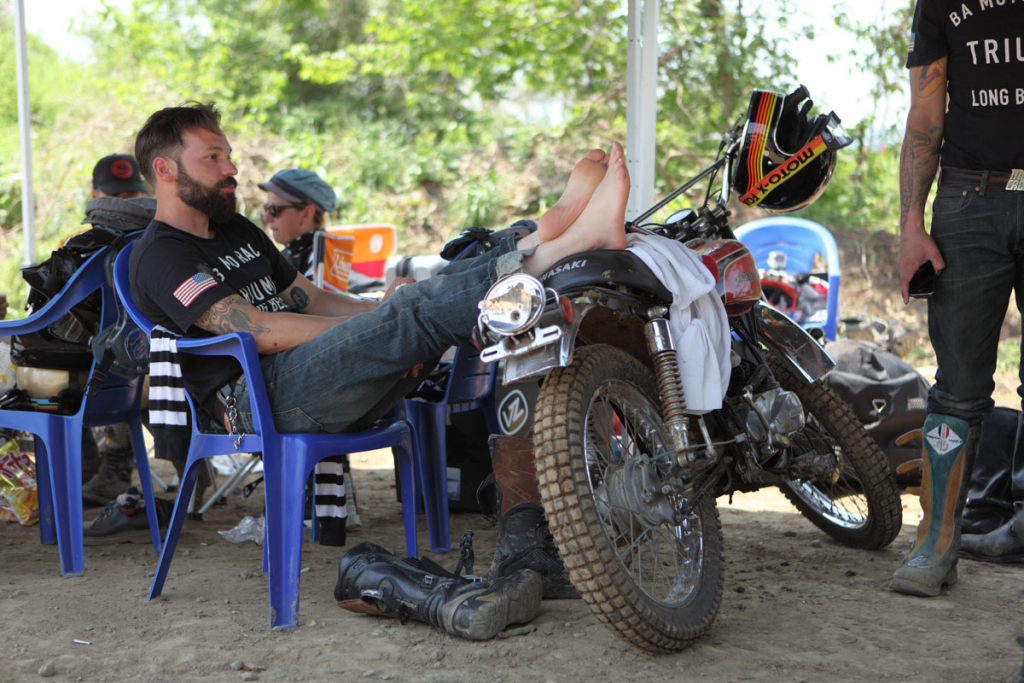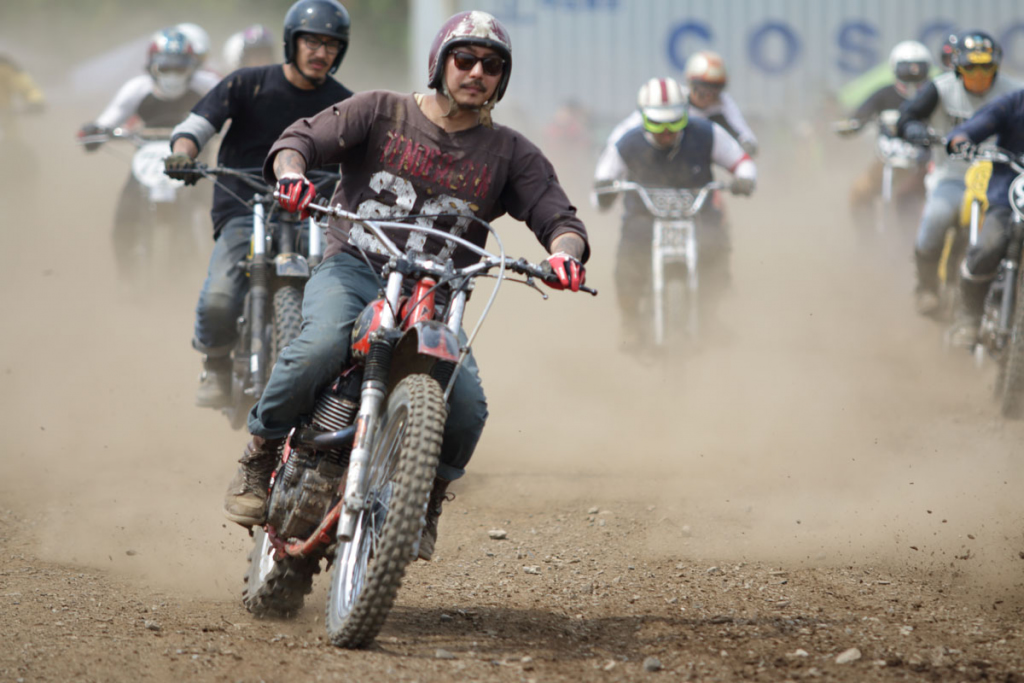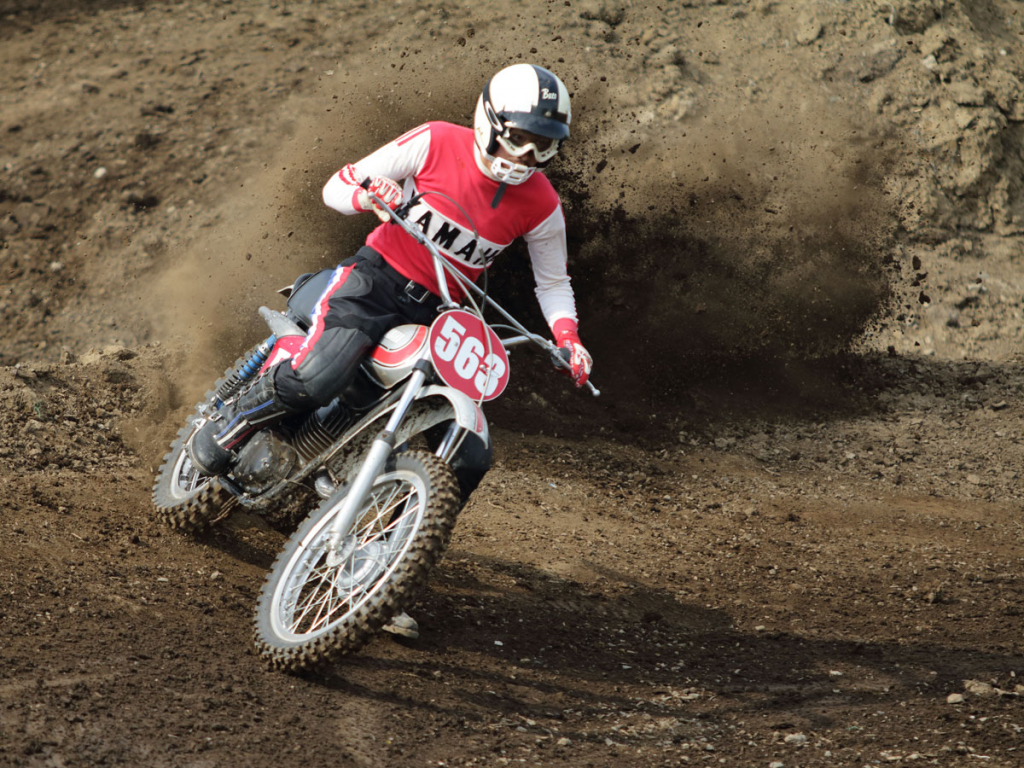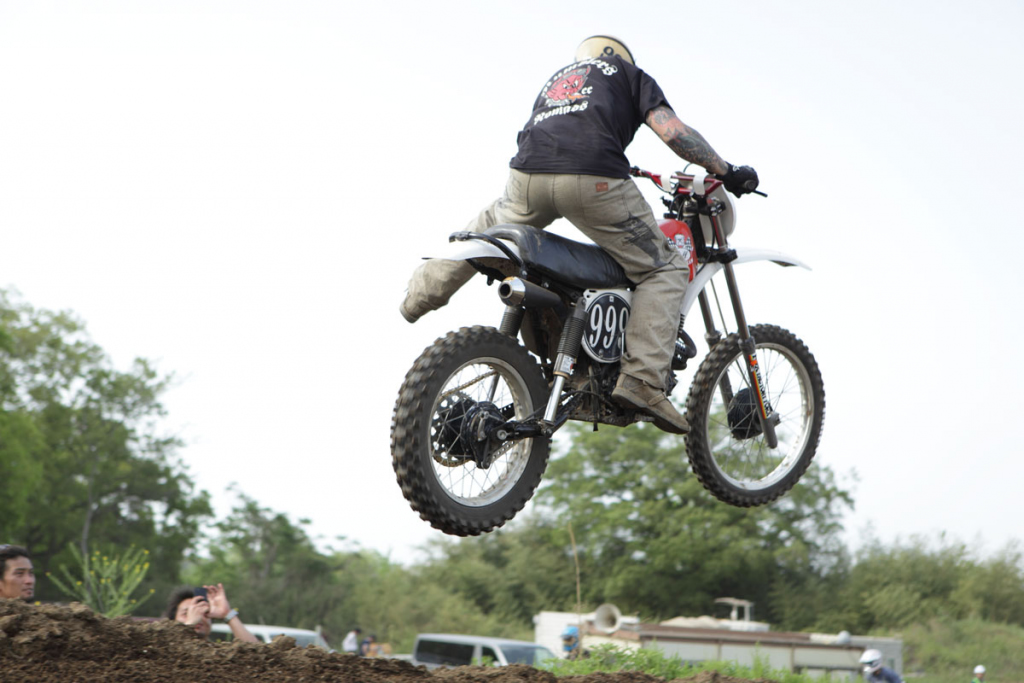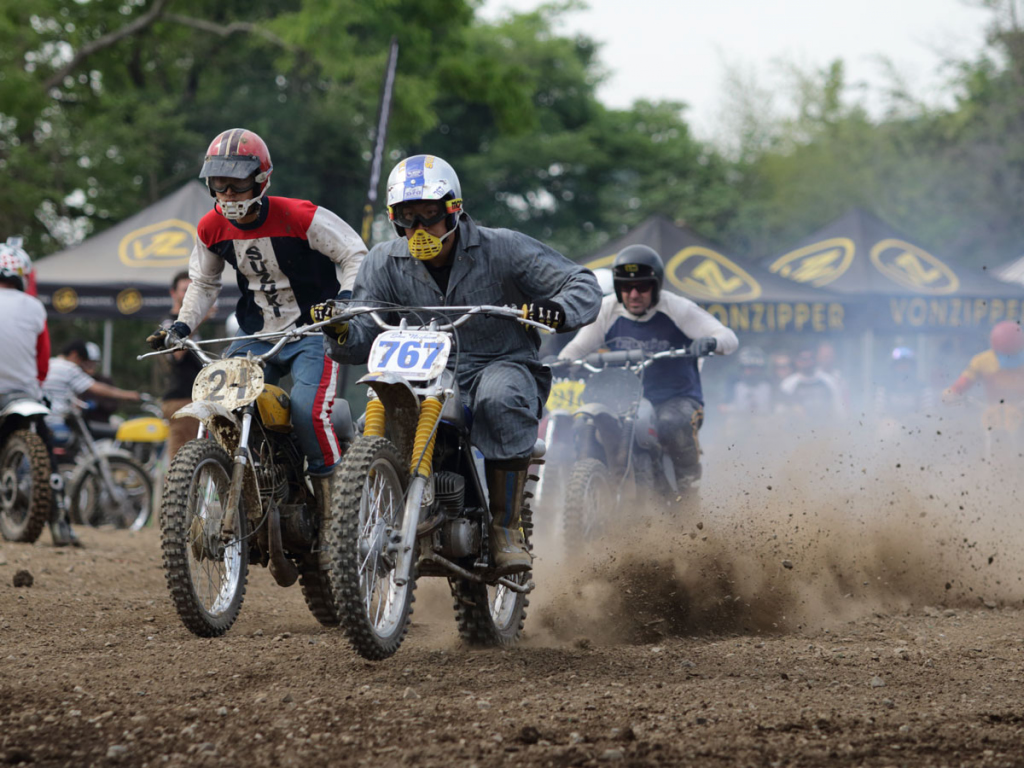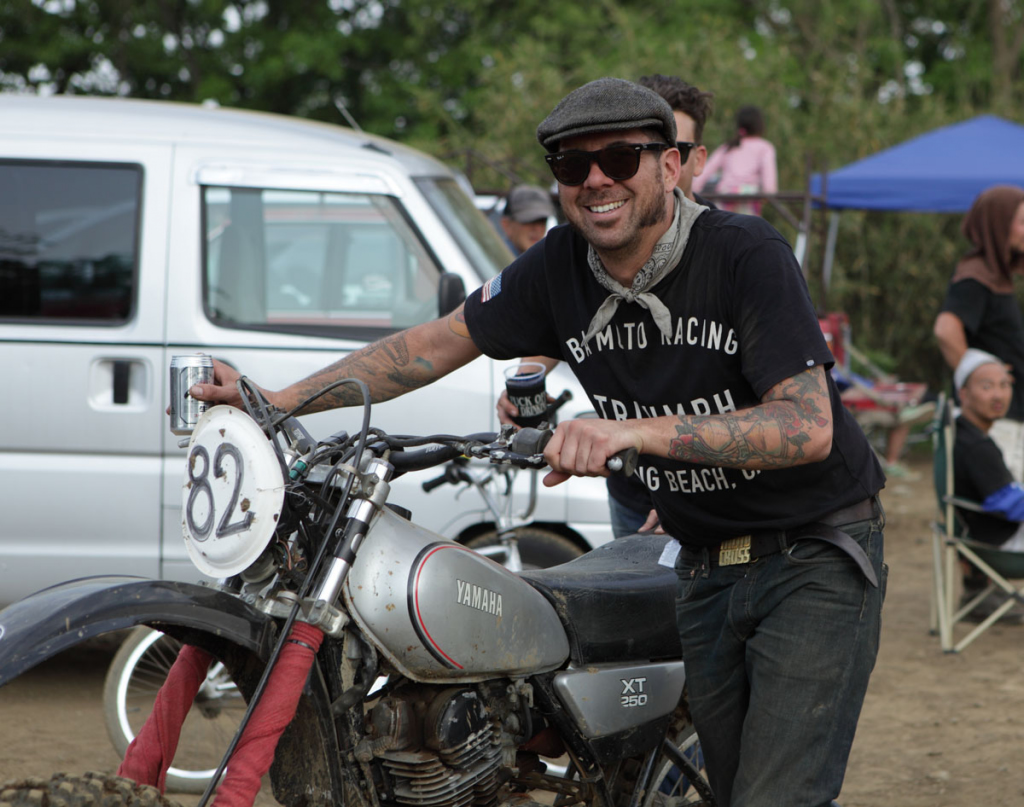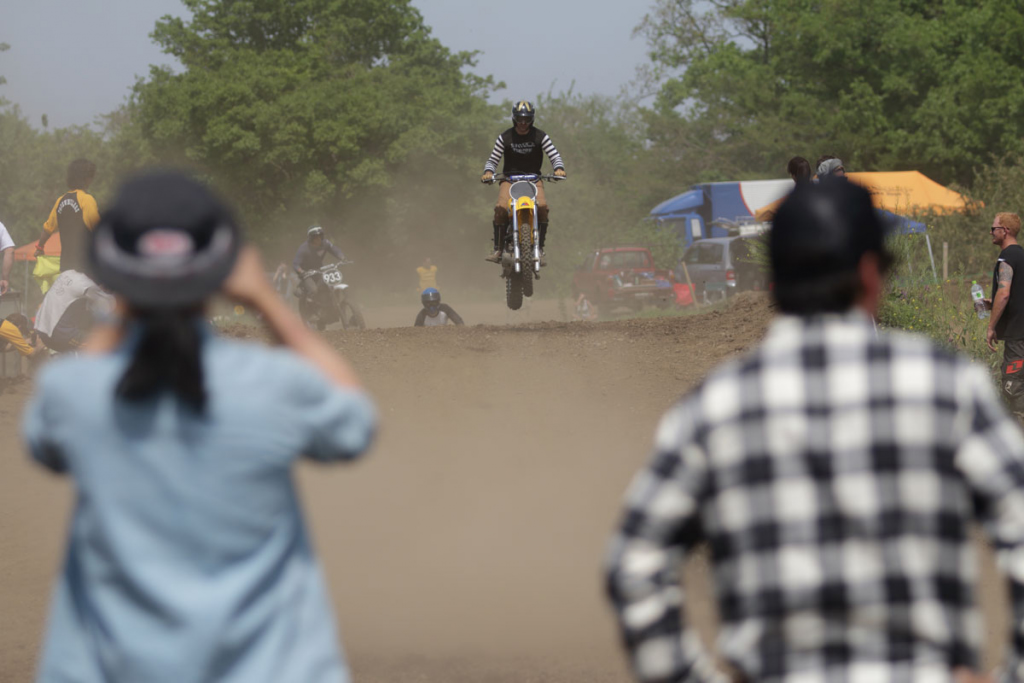Riding motocross requires a certain type of adrenalin-seeking lunatic—it’s a sport with severe inherent dangers.
Text and pictures by Kyle Drubek
Broken bones, ligaments, cuts, and bruises are all part of the risk taken for the rush of clearing a gap, taking a turn tighter, or accelerating harder.
You may have preconceptions of what sort of culture would populate a dirtbike track, images of high flying, high-octane energy drink–fuelled athletes may spring to mind. There are, however, subcultures in most action sports, and motocrossing is just the same. Meet Hell on Wheels.
Earlier in the year this group of motorcyclists spent a full day packing 40 vintage motorcycles into a shipping container in California. Their purpose: a single day of racing at an out-of-the-way motocross track in Saitama. Organizer Jeff Tulinius, who usually goes by the name “Meatball,” describes the Hell On Wheels crew and affiliates as “a vintage motorcycle repair shop in California—just a couple of guys wrenching on old bikes. We get out and race as often as we can. No real clubs as such came with us, but the guys and gals from Von Zipper, Deus, BA Moto, Lossa Engineering and a few others came along.”
This eclectic group of riders shares a love of building, maintaining, and most importantly, riding motorcycles which probably should be relegated to short Sunday jaunts. These people take their fun seriously, and relish in restoring motorcycles long past their glory days, and then thrashing them to the point of near implosion.
Connett Brewer of BA Moto lets us in a bit to the appeal of riding these rustbuckets: “These old bikes have class and tie us into a past that was the start of a motorized two-wheel revolution. They are timeless and unique. Much like antique cars, I consider them works of industrial art. Yeah they leak oil and s— breaks but as long as you stay on top of it, they will treat you right. That’s old British for you…just ride and enjoy life.”
The concept of “run what you brung” stands as a stark contrast to the mainstream bike cultures of Japan, where high-cost custom fabrications and high performance add-ons are common. In this case aesthetics run a far second to purpose, but function also creates new forms, presenting a pleasing demonstration of styles and inventiveness.
A dusty parking lot in Kawagoe was packed with transport vans, aged trucks, and bikes representing almost every country imaginable. Reveling in the gritty, oily air, the 200+ participants finished their practice runs on a course built and maintained for modern suspensions and high-power engines.
At first glance, many of the rusty, seemingly cobbled together bikes looked incapable of completing a full lap, much less a full race. Some had been meticulously restored, while others were covered with an aged patina of scuffed paint and fitted with fiberglass-wrapped mufflers. All were machines that had been lovingly cared for, sporting engines which had gone under countless rebuilds, hand-packed bearings, and frames modified to handle brutal jars and slams.
The race itself was simple—it was divided across engine size categories, with a series of heats for each one—but in all honesty, the results were of little concern to most involved. The key element was to enjoy a single day of racing which had taken months of preparation and countless hours of mechanical work, and hopefully not be injured in the process.
The Clash boomed from PA speakers, and the races kicked off in a massive cloud of fine dust. The roar from raucous two-stroke engines echoed from the surrounding forest. Bikes abandoned at the starting gate were common, while bikes with engines wrung past their limits similarly peppered the track, stalled or sometimes just plain dead. A struggle for survival had begun, riders intent on making each lap faster, taking each jump longer, and pushing their bikes’ finite capabilities against the unrelenting track.
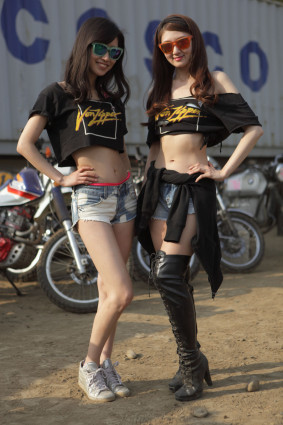
Hard-tailed Triumphs ran against slightly more modern twin suspensions, two-strokes against four-strokes. The riders rode that thin line between control and utter mayhem: sometimes they would make heavy contact in tight berms, and sometimes a misjudged landing would launch a rider off the track. The riders stood in hearty defiance of danger, and embraced the consequences.
It was a collective rejoicing in days long past, when full-face helmets and body armor were unheard of, a throwback reminiscent of hazy summer afternoons, skidding bicycles with playing cards clothespinned into spokes, and handbuilt wooden jumps.
The trip out to Japan was a first for the Hell on Wheels crew, and they weren’t sure how things were going to go with the Japanese motocrossers. “We’d seen magazine articles and videos on the internet but you never know what to expect … The Japanese guys didn’t disappoint. They had some of the best bikes we’d ever seen and their clothing and gear was dead on. The starting grid looked straight out of 1969! Along with that, they were just some of the nicest guys you could meet; [we] really enjoyed hanging out with them.”
Some may cry sacrilege at the sight of a collection of classic or vintage two-wheeled machines being so callously thrashed, but it is rallies and races like this that offer a glimpse of the roots of modern-day riding and machines. It was a chance to see these bikes in action—not stored carefully away in a shed or showroom, but run to their limits—and experience the thriving culture of the people who ride them.

